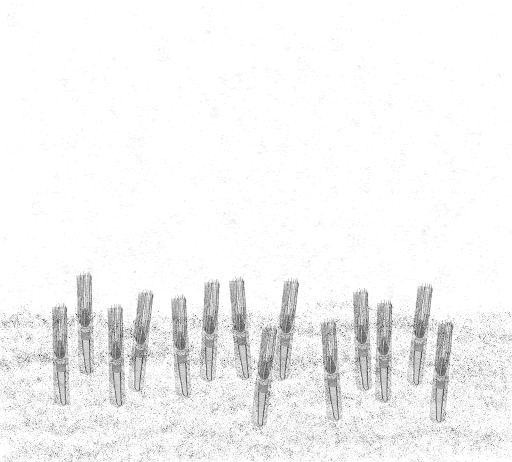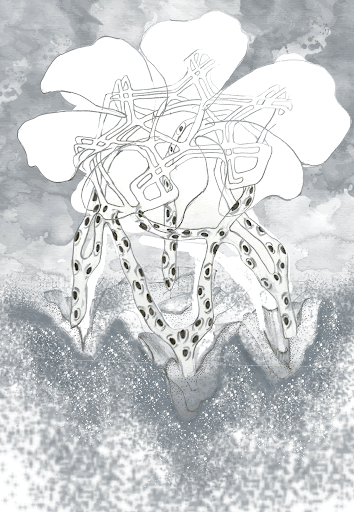Allied Studies, Rohit Mujumdar
Architectures of Exfoliation
Surfacing of more-than-human life
What is environment and spatiality in a monsoonal estuary, when the stability and permanence of surface, both qualities largely taken for granted as a ground for design, are called into question?
Architectures of (Ex)Foliation is a heuristic device to inquire into and respond to the processes and forms of transformations in beings, things and spaces as the forces and energies of monsoonal wetness and urban life act upon them in the monsoonal estuary, and vice-versa. But how does one come to ‘learn’ such environments and spatialities when walking, talking, listening, seeing, sensing and sharing - the pedagogical transactions that are central to their experiential learning - lie in a moment of suspension?
Finding ourselves sitting in our homes in the midst of pandemic shutdown during this four week long Allied Studies course, we asked: How does more-than-human life surface in the monsoonal estuary? Our learning objectives were scoped around two aspects: (1) We chose examples of Cnidarians, Algae, Arthropods and Annelids, and jotted down thick journal notes and sketches by drawing upon the available secondary literature sources to think of the ways in which we could draw out our answers to engage this question; and, (2) We read five texts to situate ourselves historically in the question around environment and spatiality.
We read Metabolism in Architecture (Kisho Kurokawa 1977), Soak: Mumbai in an estuary (Anuradha Mathura and Dilip Da Cunha 2008), The Jungle’s Call (Dilip Da Cunha 2019), Sponge City: Theory and Practice (Konjian Yu 2016) and the Swamp School (Urbonas Studio 2019). These texts located the shifting debate on spatial thinking from the experiments to draw inspiration from “nature” to think of the form, structure and space of future buildings and cities to the negotiated moments and fluid occupancies in the gradients of monsoonal estuaries; and, from the potentials of ‘forests’ and ‘sponges’ as infrastructures for holding wetness to the learnings that amphibious natures made possible to adapt to the increasingly sodden monsoonal grounds across the world.
Amphibious natures make visible multiple architectures of (ex)foliation: sails and discs to float and drift; trenches, burrows and igloos to navigate and envelope; meshes and lattices to scaffold; tubes to retract and extend; ribs and stems to hold and anchor; tentacles and swirls to fend; and even pigments to camouflage. In conjunction and along with imaginations of forests and sponges as infrastructures to hold wetness, such analogies of the surfacing of amphibious natures could proliferate the possible spatial vocabularies to adapt in increasingly sodden grounds of monsoonal estuaries whose grounds call permanence and stability into question.








